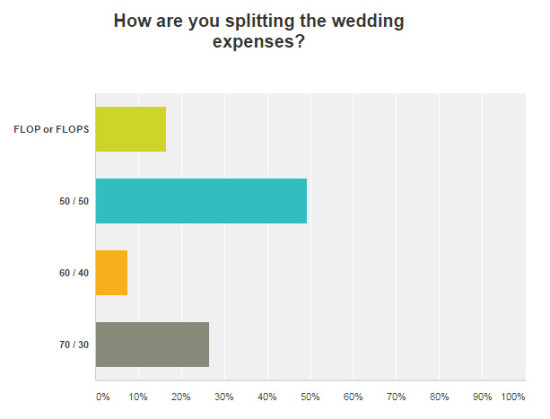Wedding Finances Survey | Part 2
In an earlier post, we discussed some of the initial results of our Jewish wedding finances survey. And interestingly enough, the breakdown of those responses did not change much as more people answered the survey.
We continue our analysis of the survey responses with question 5, namely who paid for what.
Only 16% of respondents split the wedding bill using the FLOP system. In case you belong to the 84% of people who did not use FLOP, let me fill you in. FLOP stands for Flowers, Liquor, Orchestra, and Photography. It is one way to divide the wedding bill between the two parties: the groom’s side pays for FLOP, while the kallah’ side pays for the rest (which is mainly the Hall and the Catering). This system is (or perhaps was) popular with a more “yeshivish” crowd, but only 16% of this blog’s readers used this approach. The most popular way to divide the chassanah expenses, used by almost 50% of couples and families, is the 50/50 split.
There were many instances (these were mentioned in survey comments) where one side paid for 100% of the wedding bill. The bride’s side was the paying side more often than the groom’s, but the occurrence was frequent enough to be significant. When does one side pay for the entire wedding? Does this happen when one side is significantly less advantaged than the other? Or when one side wants a lavish wedding reception, while the other is looking for a budget approach?
We also wanted to know if parents still foot the wedding bill like they did back in the day.
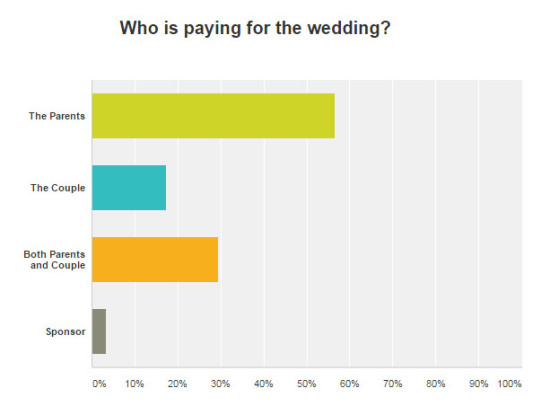
And the answer is yes, in 56% of cases, the parents paid for the whole thing. Baruch Hashem for mom and dad (or abba and ima or mommy and totty)! That’s not to say that many brides and grooms do not contribute. In the rest of the couple contributed or paid for the whole thing themselves in the rest of the weddings (besides the three percent of weddings where a sponsor paid for it).
What about borrowing? With wedding expenses being what they are, are families forced to borrow to make it happen?
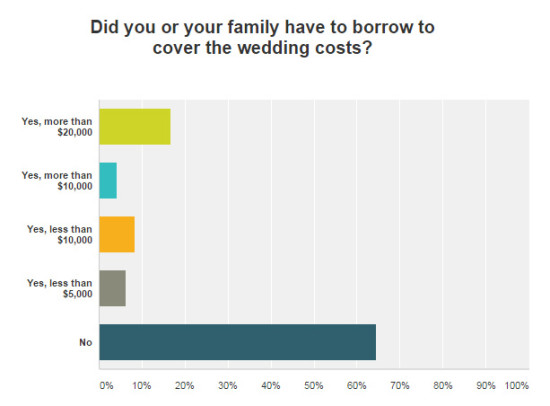
We found it pleasantly surprising that 65% of respondents said that they did not need to borrow to cover the wedding costs. Out of the 35% of couples that did borrow to afford their wedding, 17% borrowed upwards of $20,000.
This is worth contemplating. In question 10, where we asked for the total wedding cost, almost a quarter of respondents said that they managed to make a wedding for less than $15K. Which means, that the couples borrowing more than $20K for their wedding either were not blessed with this magical ability of squeezing the giant of an affair as a wedding into a $15,000 box or they preferred debt to going skimpy on this once-in-a-lifetime celebration. Of course, it is also possible that they had a larger guest list. But this also raises that question if one is really obligated to invite that many people. Who are we to judge people for the voices they make? A lavish wedding reception is certainly alluring, and it’s been that way for as long as there have been weddings. There’s just something special, almost supernatural about the grandest of all life-cycle events that is a wedding that elicits such feelings.
Now let’s get into the more sensitive aspects of paying for the wedding. We asked: Did conversations about wedding finances result in tensions between the couple or between the two families.
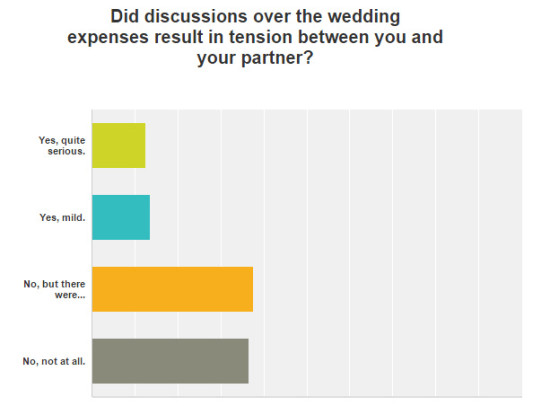
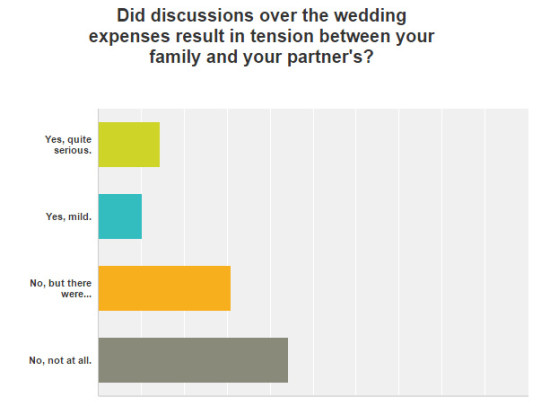 The Gemara in Shabbos says that “there are no Ketubah [discussions] that do not result in a fight”. This, of course, is not be taken literally. As we see from our survey, in overwhelming majority of weddings tensions were almost non-existent. In only 12% of weddings, did conversations about money result in serious problems, and that’s good news.
The Gemara in Shabbos says that “there are no Ketubah [discussions] that do not result in a fight”. This, of course, is not be taken literally. As we see from our survey, in overwhelming majority of weddings tensions were almost non-existent. In only 12% of weddings, did conversations about money result in serious problems, and that’s good news.

